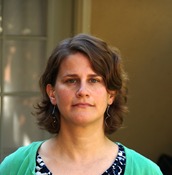Program Information
Applications of Volumetric Images Generated with a Respiratory Motion Model Based On An External Surrogate Signal
M Hurwitz1*, C Williams1 , P Mishra, PhD2 , S Dhou1 , J Lewis1 , (1) Harvard Medical School and Brigham and Women's Hospital, Boston, MA, (2) Varian Medical Systems, Palo Alto, CA
Presentations
WE-D-303-2 (Wednesday, July 15, 2015) 11:00 AM - 12:15 PM Room: 303
Purpose: Respiratory motion can vary significantly over the course of simulation and treatment. Our goal is to use volumetric images generated with a respiratory motion model to improve the definition of the internal target volume (ITV) and the estimate of delivered dose.
Methods: Ten irregular patient breathing patterns spanning 35 seconds each were incorporated into a digital phantom. Ten images over the first five seconds of breathing were used to emulate a 4DCT scan, build the ITV, and generate a patient-specific respiratory motion model which correlated the measured trajectories of markers placed on the patients’ chests with the motion of the internal anatomy. This model was used to generate volumetric images over the subsequent thirty seconds of breathing. The increase in the ITV taking into account the full 35 seconds of breathing was assessed with ground-truth and model-generated images. For one patient, a treatment plan based on the initial ITV was created and the delivered dose was estimated using images from the first five seconds as well as ground-truth and model-generated images from the next 30 seconds.
Results: The increase in the ITV ranged from 0.2 cc to 6.9 cc for the ten patients based on ground-truth information. The model predicted this increase in the ITV with an average error of 0.8 cc. The delivered dose to the tumor (D95) changed significantly from 57 Gy to 41 Gy when estimated using 5 seconds and 30 seconds, respectively. The model captured this effect, giving an estimated D95 of 44 Gy.
Conclusion: A respiratory motion model generating volumetric images of the internal patient anatomy could be useful in estimating the increase in the ITV due to irregular breathing during simulation and in assessing delivered dose during treatment.
Funding Support, Disclosures, and Conflict of Interest: This project was supported, in part, through a Master Research Agreement with Varian Medical Systems, Inc. and Radiological Society of North America Research Scholar Grant #RSCH1206.
Contact Email:


